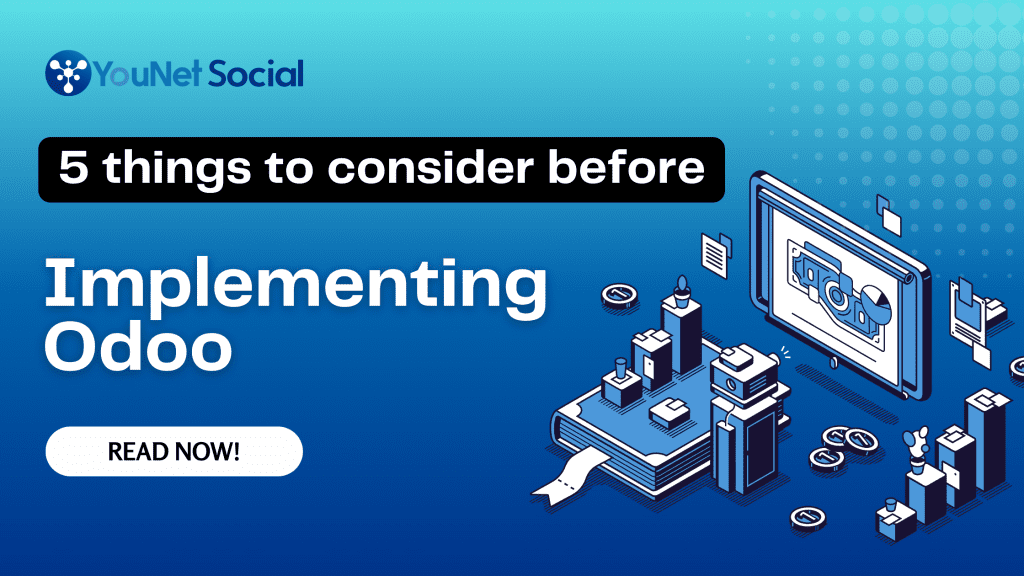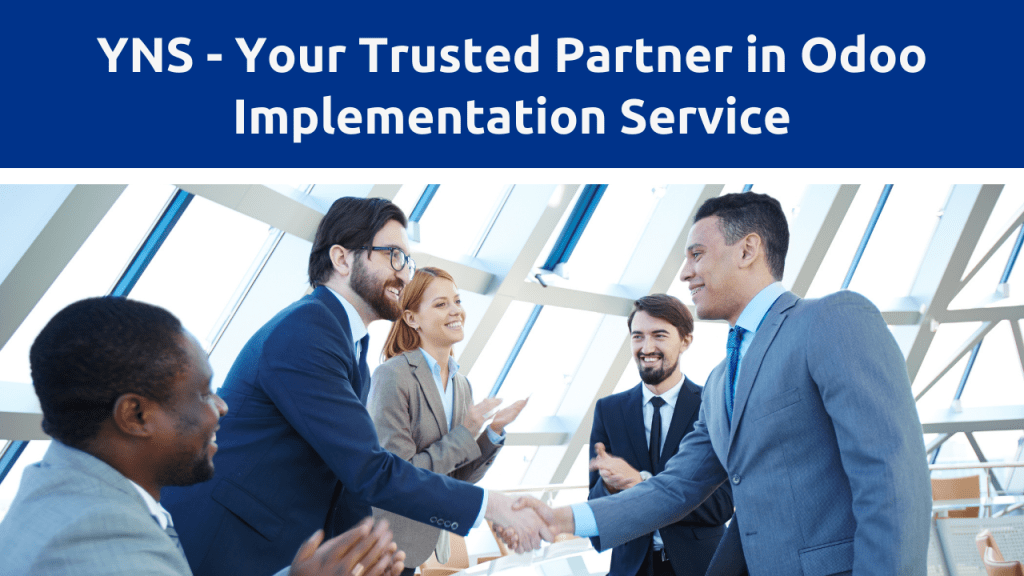

Odoo has taken the place of conventional ERP solutions. The flexibility to be customized and integrated are two of the key features that set Odoo ERP Solutions apart from other types of software. The solution includes a wide range of tools and applications that simplify several management tasks. In this article, we’ve outlined 5 factors that every company should think about before implementation. Let’s get going.
1. Odoo Is Open Source, But Not Free
The first thing you should know about Odoo is that while it’s open-source, it isn’t necessarily free. There are two versions: the community version, which is free, and the enterprise version, which requires a paid subscription. Many people mistakenly assume that open source means there’s no cost involved, but that’s not the case.


Freedom Comes With Responsibility
Odoo’s open-source nature gives you flexibility with a vast array of modules, applications, and partners to choose from. However, this freedom also means you need to manage the costs associated with your implementation.
Avoid Over-Customization
Odoo’s philosophy is to keep it simple. It’s essential not to go overboard with customization. Implementing an Enterprise Resource Planning (ERP) system like Odoo involves significant resources, and over-customizing can complicate things and lead to higher costs. Companies often make the mistake of customizing too much, which can lead to increased costs and unnecessary complexity. The more you customize, the more you will likely spend.
Remember the Maintenance Costs
In addition to the upfront costs of implementation and customization, you should also consider the ongoing maintenance costs. Odoo releases new versions annually, which means you’ll likely incur additional costs for updates, especially if you’ve customized the software extensively. Keeping this in mind can help you plan your budget more effectively and avoid surprises later on.
2. Odoo Has a Variety of Applications
Odoo offers a wide range of applications, giving businesses the flexibility to choose the modules they need. However, it’s important to select only those that are essential for your business. Here’s how to approach this effectively:
Choose the Right Apps to Implement
When exploring Odoo, it’s easy to get overwhelmed by the sheer number of applications available in its eCommerce marketplace. Small business owners often get carried away and end up installing more apps than they actually need. Remember, each application comes with its own implementation and maintenance costs. To avoid unnecessary expenses, carefully select the apps that address your current business needs.
Identify and Prioritize Your Requirements
Before implementing Odoo, it’s crucial to identify and prioritize your business requirements. Conduct a GAP analysis with your Odoo implementation partner to determine which applications are necessary. This will help you control the project’s scope and budget. By understanding your core requirements, you can focus on the apps that deliver the most value.
Trust Your Implementation Partner
Your Odoo implementation partner is there to guide you. If they advise against implementing certain applications, it’s likely because those apps aren’t essential at that stage of your business. Trust their expertise to avoid overloading your system and incurring unnecessary costs. By listening to your partner, you can save time and money, ensuring a smoother implementation process.
3. Odoo Is Intuitive and Simple to Use
One of the key strengths of Odoo is its user-friendly interface. This makes it a competitive choice for businesses looking for an ERP solution that doesn’t require extensive technical expertise. However, even though Odoo is intuitive, there are some important things to keep in mind:
Simple to Use, But Training Is Essential


While Odoo’s design is straightforward, training is still crucial. Just because it’s easy to navigate doesn’t mean you should skip training sessions for your team. Proper training ensures that your staff understands the software’s capabilities, reducing confusion and errors. It helps your team make the most of the platform’s features and improves overall productivity.
Knowledge Unlocks More Potential
The more familiar your team is with Odoo, the better they’ll be able to use it to its full potential. This increased understanding leads to more efficient processes and a smoother workflow. Odoo’s open-source nature means there are plenty of resources available to deepen your knowledge, which can result in better outcomes for your business.
Allow Employees Time to Learn and Adjust
Implementing Odoo is a significant change for any organization, and it’s important to give employees the time they need to adjust. Rushing into full-scale operations immediately after implementation can lead to mistakes and setbacks. Instead, provide a grace period where employees can learn, explore, and adapt to the new system. This approach fosters a more positive transition and reduces stress for your team.
Overall, while Odoo is designed to be easy to use, taking the time to ensure proper training and allowing employees to adjust is key to maximizing its benefits. This way, you’ll be able to enjoy a smoother transition and better outcomes for your business.
4. Odoo is an ERP That Evolves Rapidly
Odoo is an Enterprise Resource Planning (ERP) system that releases a new version every year. This rapid development pace requires careful preparation before implementing Odoo to ensure smooth operations.
Simulate Your Business Processes
Before you implement Odoo, simulate your business processes to ensure the system can handle them effectively. This helps your implementation partner identify potential issues and address them before they impact your operations.
Test Thoroughly Before Going Live
Odoo’s SAAS version updates every two weeks, so thorough testing is essential before going live. Test all aspects of your system to make sure it functions correctly, avoiding unexpected disruptions once you launch.
Stay Aligned with Odoo’s Evolution
Odoo’s frequent updates require you to stay informed about new features and changes. Regularly check for updates, and discuss them with your implementation partner to ensure your system evolves alongside Odoo.
By following these steps, you can implement Odoo with confidence and adapt to its ongoing evolution without disrupting your business.
5. Odoo Is Great, But It Can Still Fail
Despite its powerful features, Odoo can still face implementation challenges. To ensure success, consider these below key factors:
Choose the Right Implementation Partner
Selecting the right partner is critical for a successful Odoo implementation. A good partner understands your business needs and can guide you through the process, helping to avoid miscommunication and potential setbacks. Find a partner who aligns with your goals and has a track record of successful Odoo projects. At YNS, we specialize in Odoo implementation and are dedicated to being your trusted partner throughout the process. With our expertise and commitment to client success, we ensure that your Odoo integration is seamless and tailored to your business needs. Want to talk to our experts? Contact us now!


Develop a Solid Implementation Plan
A well-structured implementation plan is essential for a smooth transition to Odoo. Break down the process into manageable phases and ensure you have clear milestones. Schedule regular training sessions for your team to minimize confusion and maintain momentum throughout the project.
By addressing these factors, you can greatly improve your chances of a successful Odoo implementation. While it’s an excellent tool, careful planning and the right support are crucial to avoid failure.
In Conclusion
Implementing an ERP system like Odoo can be a game-changer for small to medium-sized businesses, but it comes with its challenges. It’s not just about adapting to new software—it’s about embracing different business terms and processes. Transitioning from an old system to Odoo requires time, training, and a willingness to learn.
As you navigate this significant change, it’s crucial to be aware of the potential constraints and to prepare your team for the transition. A successful implementation depends on a flexible mindset and openness to guidance from ERP experts. By being receptive to advice and focusing on proper training, you can make this shift a smooth and transformative experience for your organization.



